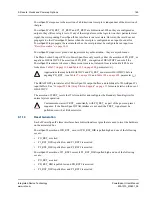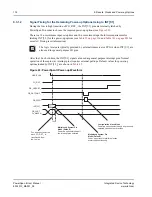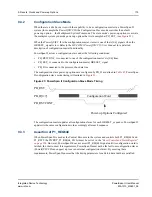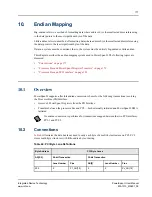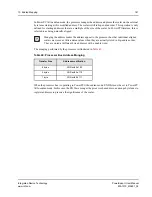
10. Endian Mapping
183
PowerSpan II User Manual
80A1010_MA001_09
Integrated Device Technology
www.idt.com
10.4
Processor Bus and PCI Transfers
The following endian conversion modes are provided for transactions involving the processor bus and
a PCI Interface:
•
Big-endian (swap or address invariance)
•
Little-endian (no swap or data invariance)
•
PowerPC little-endian (no swap and address munge)
•
True little-endian (swap or address invariance)
The following PowerSpan II register bits are used to control the endian conversion for transactions
involving the PB Interface and PCI:
•
END [1:0] field in the
“PCI-1 Target Image x Control Register” on page 268
•
END [1:0] field in the
“PCI I2O Target Image Control Register” on page 352
•
END [1:0] field in the
“Processor Bus Slave Image x Control Register” on page 287
•
END [1:0] field in the
“DMA x Transfer Control Register” on page 311
The endian conversion mode of a DMA channel can be updated for each direct mode transaction or for
each element in a linked-list.
The following sections describe each of the endian conversion modes.
10.4.1
Big-endian Mode
When operating in big-endian mode, PowerSpan II uses an address invariant scheme for mapping
processor bus byte lanes. In this mode, all elements of a multi-byte structure or scalar appear at the
same address in both PCI and processor bus spaces, but their relative significance is not preserved.
If the processor bus is programmed to be big-endian, PowerSpan II big-endian mode must be used for
processor bus/PCI transactions.
PowerSpan II byte lane mappings for big-endian mode support are illustrated in
number references are defined in
.

